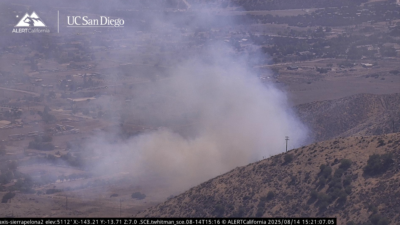One of Gavin Newsom’s political ploys is to depict political rivals as bullies and himself as someone who stands up to them.
Last September, for example, he devoted an entire segment of his podcast, “Politickin’,” to denouncing Donald Trump, saying he is “a bully. But here’s the thing about bullies — they’re weak.”
That was before Trump was elected and Newsom had to play nice in hopes of securing billions of dollars in federal relief aid for fire-damaged L.A. County. After initially saying he would provide such aid during a visit to L.A., Trump began hinting on imposing conditions on California, such as tightening up voting requirements and loosening up on water deliveries to farmers.
Newsom then reverted to his previous role as a leader of resistance to Trump.
Yes, Trump does use bullying tactics to get his way. He uses aggressive policies — such as tariffs on imports — as a negotiating tactic. So does Newsom.
One example is the campaign his office is waging among the media to discredit USC Professor Michael Mische, who projected that as California loses in-state refinery capacity, gasoline prices could soar to more than $8 a gallon.
If Newsom believes Mische is wrong, an effective response would be research that proves it. But rather than refute Mische’s analysis, the administration has been planting suggestions that Mische is employed by Saudi Arabia, even though his advice to that nation ended years ago.
Newsom is never shy about forcing local governments to obey his demands, whether it’s making land available for housing or being more aggressive about clearing encampments of homeless people. Newsom periodically threatens to withhold funds from or take legal action against cities and counties he deems to be negligent, emulating Trump’s tactics against states that won’t bend to his will.
It happened again this week when Newsom released $3.3 billion in bond money for housing and treatment of the mentally ill and homeless populations.
“It is time to take back the streets,” Newsom said in a virtual press conference. “It’s time to take back the sidewalks. It’s time to take these encampments and provide alternatives and the state is giving you more resources than ever, and it’s time, I think, to just end the excuses.”
Newsom unveiled a model anti-camping ordinance he wants local officials to adopt and hinted there would be consequences for those who balked.
“I’m not interested anymore, period full stop, in funding failure,” he said. “I want to see real results, and you’ll see in my budget on Wednesday that we’re going to hold that line.”
After receiving Newsom’s latest admonishment, local officials issued their latest defense.
Jeff Griffiths, Inyo County supervisor and president of the California State Association of Counties: “No, the state has not done everything it can to address homelessness in California. Without clear responsibilities for every level of government and reliable funding for cities and counties, successful local efforts will wither on the vine.”
League of California Cities executive director Carolyn Coleman: “When it comes to addressing homelessness, the question is not how many cities have encampment ordinances. It is whether cities have the ongoing funding from the state to match the scale of the crisis. Cal Cities stands strongly behind its position that now is the time for the state to invest in ongoing funding for all cities, big and small, to address homelessness.”
Bullying or political hardball? It’s difficult to discern the differences between Trump’s demands on states and Newsom’s on cities and counties. And if Trump’s bullying stems from weakness, what about Newsom’s?
Dan Walters’ commentary is distributed by CalMatters, a public interest journalism venture committed to explaining how California’s state Capitol works and why it matters.










